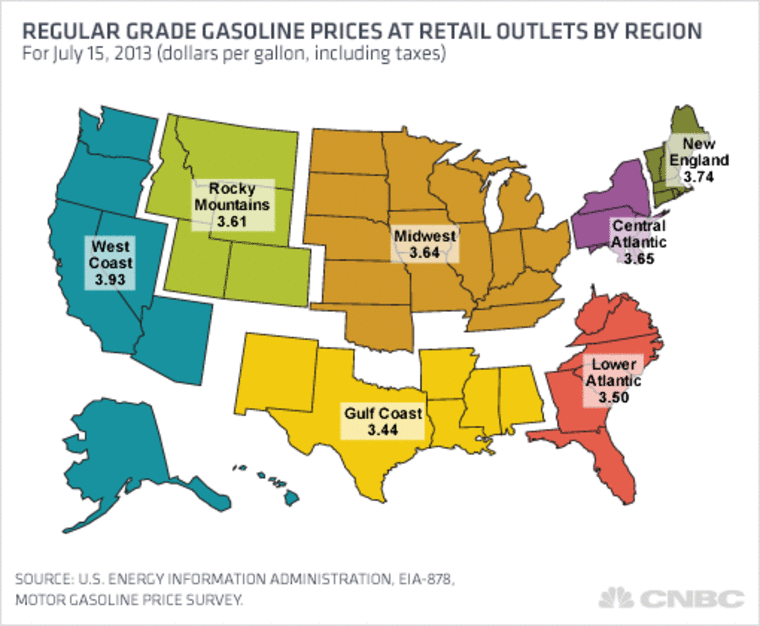Gasoline prices, up an average 15 cents in the past week, could quickly rise another 5 to 10 cents before peaking, and drivers in the Northeast could feel it most, experts say.
While gasoline could reach a national average of $3.75 per gallon, or even more, analysts do not expect it to top the $3.78-per-gallon high for the year it hit in February, unless there is another jump in oil prices or a major event, such as a hurricane, that disrupts refining in the Gulf Coast.
The national average for regular unleaded gasoline Wednesday was $3.65 a gallon, up from $3.50 last Wednesday and four cents above levels a month ago, according to AAA Fuel Gauge Report. The increase in gasoline prices is likely to be temporary and should reverse as the summer goes on, analysts say.
"Retail still has some catching up to do. It has another five to 10 easy cents," said Tom Kloza, chief oil analyst with Gas Buddy. "I think it’s 50/50 whether we get up to that previous 2013 high of $3.78."
Kloza predicted last week that gasoline would jump by 10 to 20 cents because of the large, 30 to 60 cent gap between spot wholesale prices and retail prices. The catalyst was a surge in demand, at the same time oil prices were rising.
(Read more:US crude supplies shrank by 6.9 million barrels)
"Beyond the data, there's some things happening that point to the Northeast being a hot spot for the next few weeks," said Kloza. "A couple of key refineries look as if they have some operational difficulties. The last thing you want to do in the middle of summer when gas demand is high and prices are high [is] have some routine maintenance, but it looks like it's happening."
Andrew Lipow, president of Lipow Associates, said the St. John Irving refinery in Canada, which typically sends 120,000 to 125,000 barrels a day to the Northeast, is currently sending little because of shutdowns of its catalytic crackers. He said the Phillips 66 refinery in New Jersey and the Philadelphia Energy Solutions refinery in Pennsylvania are both conducting maintenance.
"That's impacting some amount of gasoline," Lipow said. But refineries are also pumping out more product than ever. Gasoline was averaging $3.98 in Connecticut on Wednesday, $3.70 in Massachusetts, $3.78 in Rhode Island and $3.74 in Maine. While the Northeast should feel the sting of rising prices disproportionately, the West Coast already has the highest gas prices in the country. In California, the average price per gallon is more than $4 a gallon.
Gasoline production averaged 9 million barrels per day last week, according to EIA.
"We hit another all-time record for distillate oil product this week—5.08 million barrels a day, which was higher than last week," Lipow said. "In addition, the refiners continue to produce 500,000 barrels more a day this year than last year due to more capacity that's come online. One of the big-picture issues you're going to continue to see is a decline in crude oil inventories as we run at higher rates and turn it into product."
Increased shipments of crude by rail and the reversal of several pipelines have enabled more shipments of WTI crude out of Cushing, Okla. Oil produced in the U.S. had been landlocked there and is finally flowing more freely around the center, a factor helping to lift its price closer to that for international Brent crude.
"If we see further increases, it will be because of supply," Kloza said.
Traders have become overly excited about rising prices, he said. "It's very much a mixed bag. I don't think there's anything to worry about there because domestic crude oil production is really rising."
More business news:
